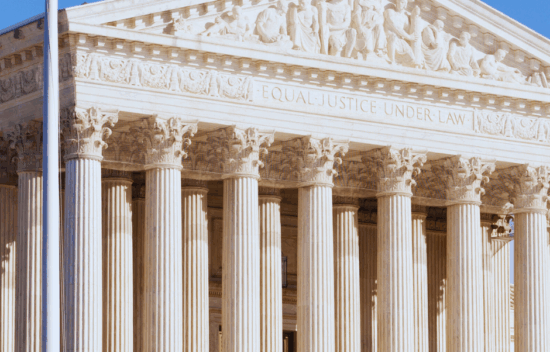
Homework Help: Marbury v. Madison (1803)
Guiding Question
- How did the emergence of political parties influence the development of American democracy?
Objective
- Students will understand the importance of the Marbury v. Madison (1803) Supreme Court case.
Student Resources:
Facilitation Notes
- This activity focuses on Marbury v. Madison (1803), creating prior knowledge to build on in subsequent resources. It is intended to help students view the video with purpose and scaffold pieces of the video that may not make sense to young learners without teacher support.
Engage
- Prepare the video
- Before beginning the video, share with students:
- We will be watching a video about a supreme court case called Marbury v. Madison from 1803. This case is considered one of the most important Supreme Court cases in U.S. History because it changed the scope of power of the Judicial Branch. We will watch the video several times. On the first viewing, listen for why this case is considered so important.
- After the video, emphasize that Marbury vs. Madison created the concept of Judicial Review.
- Judicial Review is the power of the Supreme Court to determine if laws/executive orders violate the Constitution. This allows the Court to check the other branches and prevent tyranny.
Explore
Multiple viewing strategy:
- Students watch the video two or three times as a whole group, with guidance from the teacher, and focus on different concepts in each viewing.
- For example, they could focus on the historic context in the first viewing and the constitutional questions in the second viewing.
Scaffolding note: Flex the multiple viewing method to fit your group of learners. The concepts that you choose to focus on in each viewing may differ with each class.
- Consider stopping the video during viewings to support student understanding of the topics in the video. Some important constitutional concepts and historic events to focus on in the video include:
- Purpose of the judicial branch: The Founders created the judicial branch to interpret the meaning of laws. While Hamilton alluded to the courts having the power to deem laws to be unconstitutional in The Federalist Papers, it was not established as a precedent until the case of Marbury v. Madison.
- Judiciary Act of 1801: This act was passed by a Federalist-majority Congress and signed by Federalist President John Adams. It was passed just a few weeks before Democratic-Republican President Thomas Jefferson and a Democratic-Republican majority in Congress would take office. The Act created new federal courts, and Adams quickly appointed judges who would be friendly to the Federalist vision of government. Because of the last-minute nature, and the story of Adams signing the commissions for the new judges on the evening before leaving office, these justices were referred to as The Midnight Judges.
- Commission: Commissions are official documents that state an individual is granted a position in the government. Jefferson’s Secretary of State, James Madison, refused to deliver a commission to William Marbury (one of the so-called Midnight Judges) for his position as a federal judge.
- Legacy of Marbury ruling: The Supreme Court has exercised its power of judicial review in many important cases throughout history. While the Court has protected rights using this power, it has also made infamous decisions that were later repealed. It is the responsibility of all branches of government to interpret the Constitution to determine what powers it possesses, and also the duty of American citizens to form their own opinions on the constitutionality of laws.
Assess and Reflect
- After watching the video ask students to write a two to three sentence summary of the video in their own words on a blank piece of lined paper.
- Use their summaries to address incorrect assumptions, gauge prior knowledge, or assess student engagement.
Teacher Note: Consider following up this activity with our The Causes and Effects of the Election of 1800 or Party Lines: The Rise of Federalists and Democratic-Republicans Lessons.